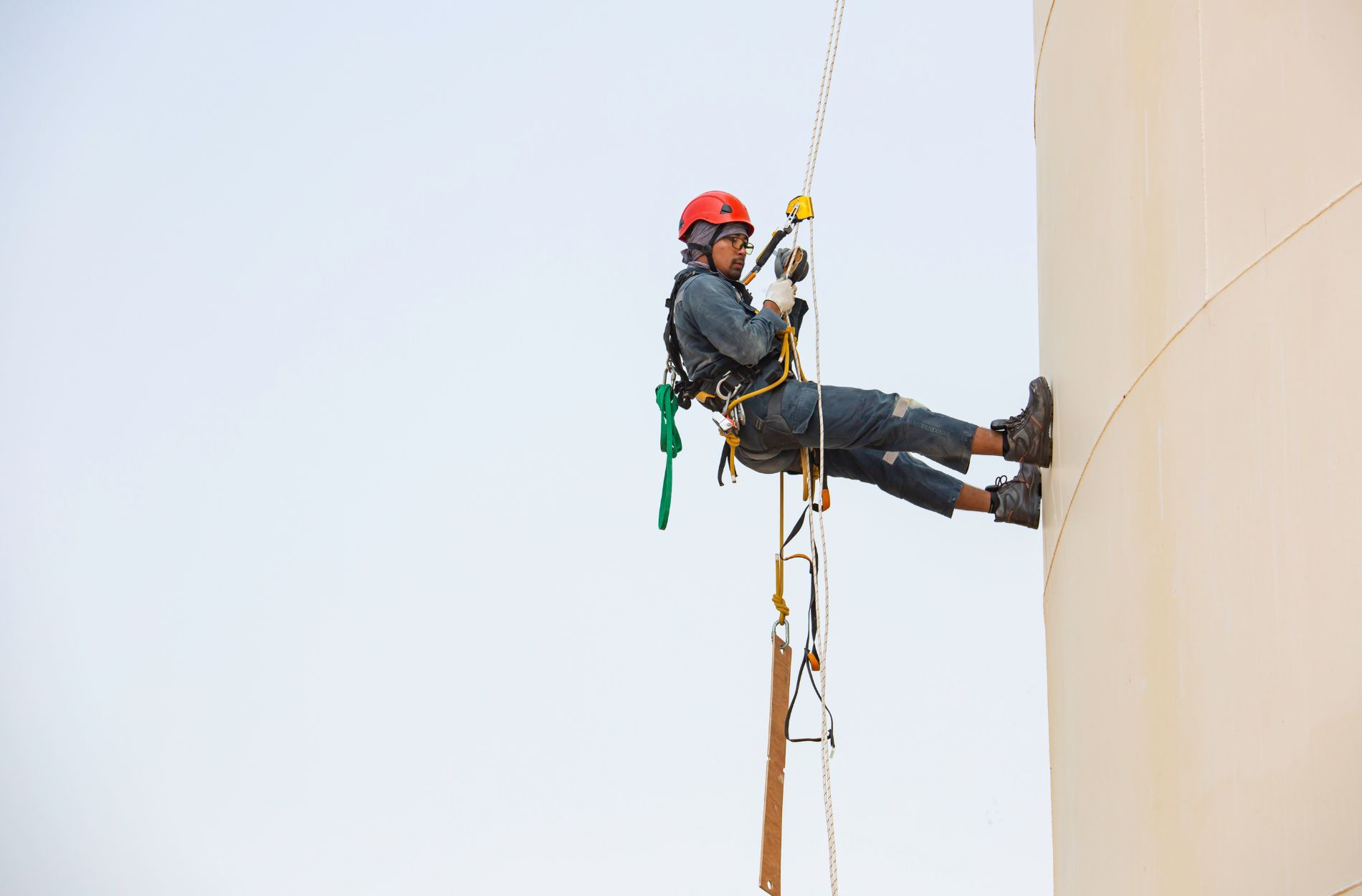Working at height is a common task in various industries but comes with serious risks. Knowing how to work safely at height is crucial to prevent accidents and injuries. The Level 2 Award in Working at Height (RQF) aims to equip individuals with the essential skills and knowledge to perform these tasks safely.
This course focuses on understanding the risks and proper safety measures needed when working at height. It offers practical insights and training to help you manage these tasks efficiently and safely. From using ladders and scaffolds correctly to understanding safety legislation, the course covers everything you need to know.
By taking this course, you can significantly reduce the risk of falls and other height-related accidents at work. Knowing the correct procedures and safety measures not only protects you but also your colleagues. Employers can also benefit by ensuring their teams are well-trained and compliant with safety regulations. This leads to a safer work environment and can help avoid costly accidents and legal issues.
Understanding the Level 2 Award in Working at Height (RQF)
The Level 2 Award in Working at Height (RQF) is a comprehensive training programme designed to enhance safety when performing tasks at height. This course provides a clear understanding of the risks involved and the best practices to manage those risks effectively. It is suitable for those who work at height regularly, including roofers, maintenance workers, and construction staff.
The importance of working at height safety cannot be overstated. Falls from height remain one of the leading causes of work-related injuries and fatalities. This course aims to equip participants with the knowledge and skills to identify hazards, understand legislation, and apply safety measures. By completing this course, you will be better prepared to prevent accidents and ensure a safer working environment.
Course Structure and Content
The course is divided into several modules, each focusing on key aspects of working at height. The structured format ensures that learners can easily grasp the essential information and put it into practice.
1. Introduction to Working at Height
– Basic principles and definitions
– Common hazards and risks
2. Legislation and Regulations
– Overview of relevant laws
– Understanding your legal responsibilities
3. Risk Assessment and Planning
– How to conduct a thorough risk assessment
– Planning safe work protocols
4. Equipment and Safety Measures
– Proper use of ladders, scaffolds, and other equipment
– Personal protective equipment (PPE) requirements
5. Emergency Procedures
– What to do in case of an accident
– Effective rescue plans and first aid
By the end of the course, participants will have gained crucial skills such as hazard recognition, conducting risk assessments, and using safety equipment correctly. These skills are vital for maintaining a secure work environment and protecting oneself and others from the dangers of working at height.
Practical Applications and Benefits
The Level 2 Award in Working at Height (RQF) offers numerous practical applications and benefits for both individuals and organisations. Understanding the correct procedures and safety measures helps prevent accidents, thereby ensuring the well-being of all employees involved in height-related tasks.
Real-World Applications:
– Construction Sites: Workers can apply the training to safely use scaffolding, ladders, and other equipment.
– Maintenance and Repairs: Technicians gain skills to handle tasks on rooftops, high platforms, or elevated machinery.
– Warehousing: Employees get equipped with knowledge to work safely on high shelving and storage areas.
Benefits:
– Enhanced Safety: Reduced risk of injuries and accidents through proper training and awareness.
– Compliance with Regulations: Ensures that your team meets legal requirements and industry standards.
– Increased Confidence: Employees feel more secure and perform better when they understand safety protocols.
Frequently Asked Questions
What is the enrolment process?
Simply visit our website, find the Level 2 Award in Working at Height (RQF) course, and follow the registration steps. You will receive all necessary information via email.
How long does the course take?
The course typically takes a few days to complete, though this can vary. You can study at your own pace, making it convenient for busy schedules.
What does the assessment involve?
The assessment includes quizzes and practical tasks to ensure you understand the material. Successful completion leads to certification.
Will I receive a certificate?
Yes, you will receive a Level 2 Award in Working at Height (RQF) certificate upon completing the course. This certificate is recognised and valuable in many industries.
Can employers enrol multiple employees?
Yes, employers can enrol multiple members of their team. Group enrolments may offer discounts and are an effective way to ensure all staff are trained.
Conclusion
Understanding and preventing the risks associated with working at height is essential for maintaining a safe and productive work environment. The Level 2 Award in Working at Height (RQF) provides comprehensive training that equips individuals with the necessary skills to handle height-related tasks safely. By completing this course, you gain valuable knowledge that helps in preventing accidents and ensuring compliance with safety regulations.
CR Training Solutions is dedicated to providing professional training solutions that enhance workplace safety. Enrol in our Level 2 Award in Working at Height (RQF) course today and take the first step towards creating a safer working environment. Let CR Training Solutions help you achieve excellence in safety practices.




